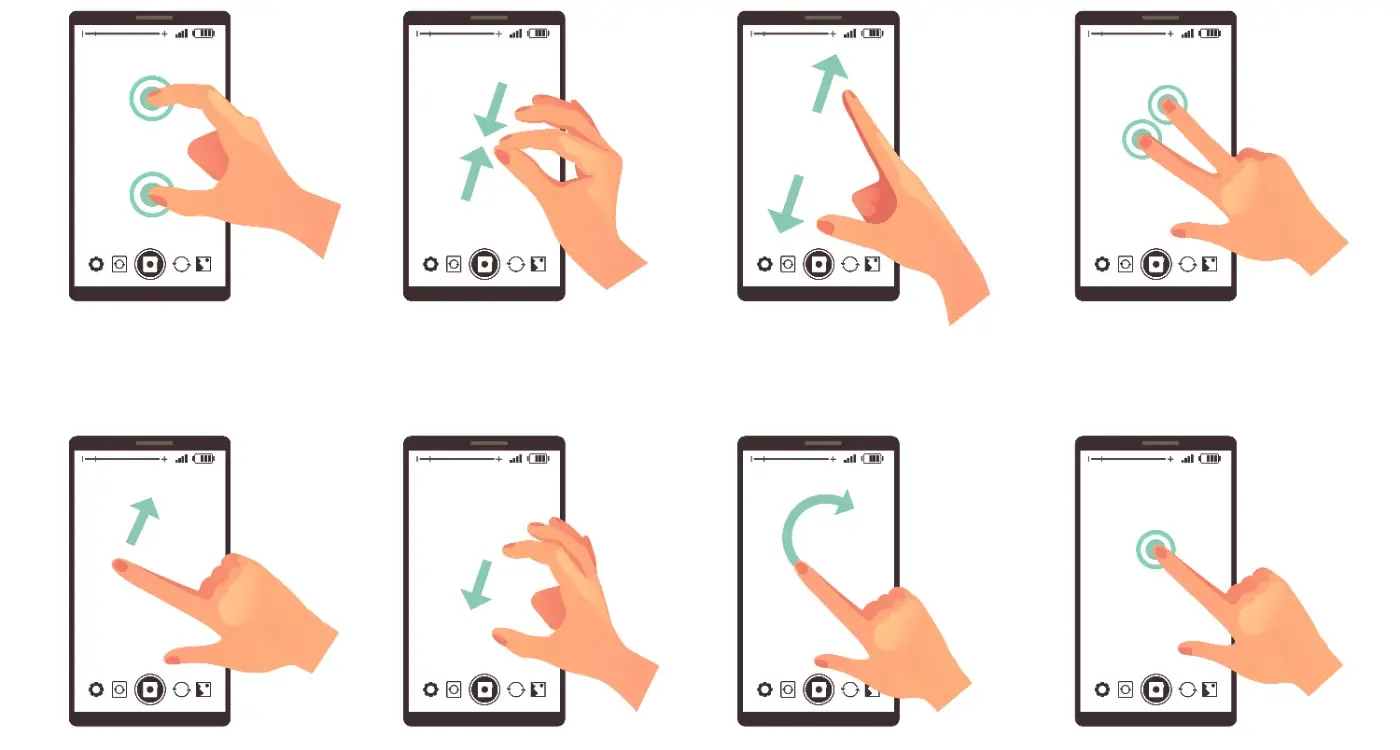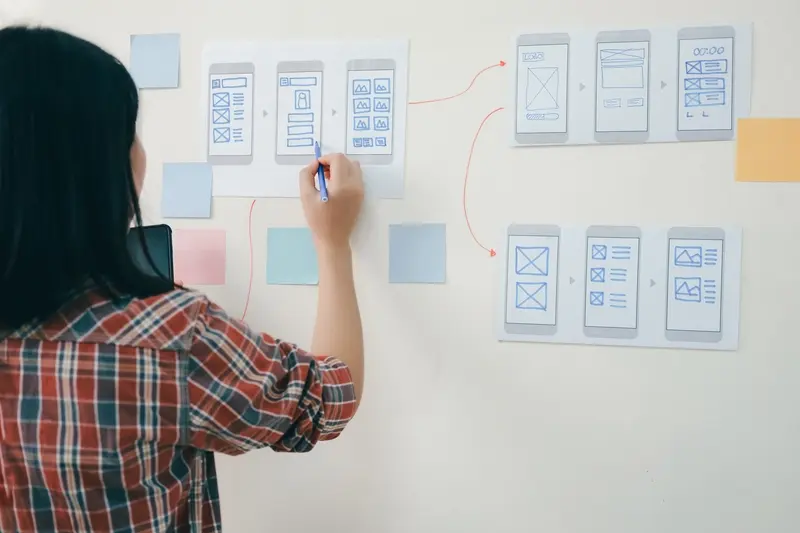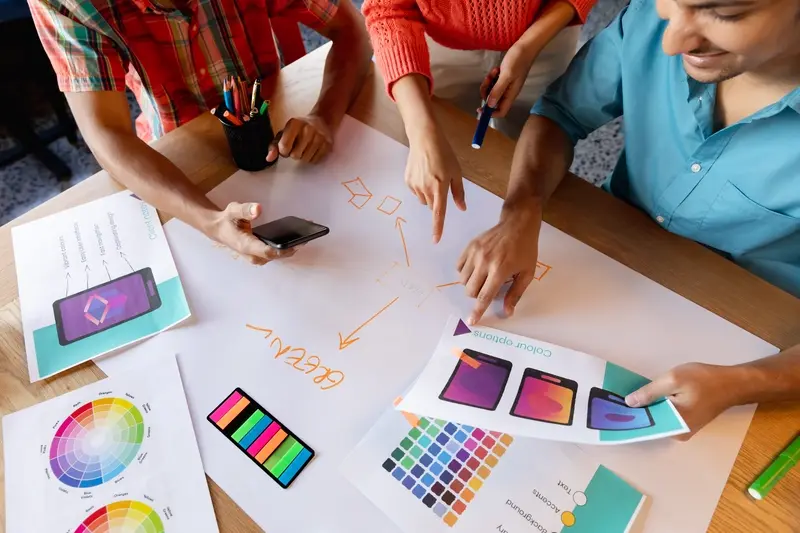What Happens When Someone Copies Your App Design?
You spend months perfecting your app's design. Every button placement, every colour choice, every interaction feels just right. Then one day, you stumble across another app that looks suspiciously familiar—actually, it looks exactly like yours. The sick feeling in your stomach tells you everything you need to know: someone has copied your design, and they're probably making money from your hard work.
This happens more often than you'd think in the mobile app world. I've seen countless developers and businesses face this exact situation, and honestly, it's one of the most frustrating things that can happen after you've poured your heart and soul into creating something original. The worst part? Most people don't know what their rights are or what they can actually do about it.
Here's the thing though—app design copyright isn't as straightforward as you might expect. Unlike a photograph or a written article, mobile app designs exist in a legal grey area that's constantly evolving. The courts are still figuring out what parts of an app can be protected and what constitutes actual infringement versus just similar design choices.
The line between inspiration and imitation becomes very blurry when you're dealing with user interface elements that have become industry standards
That doesn't mean you're powerless when someone copies your design. There are legal protections available, but understanding them requires knowing the difference between copyright, design patents, and trade dress protection. You need to know what evidence to gather, when copying becomes legally problematic, and most importantly, how to protect your designs from the very beginning of your development process.
Understanding App Design Copyright Laws
Right, let's get one thing straight from the start—app design copyright is a proper minefield. I've seen too many developers get caught out because they didn't understand the basics, and honestly, it's not their fault. The law around design protection is confusing, even for those of us who've been dealing with it for years.
Here's the thing though: your app's visual design isn't automatically protected by copyright the way you might think. Sure, individual elements like your custom illustrations, icons, or photographs get copyright protection as soon as you create them. But the overall layout, button placement, or general user interface structure? That's much trickier territory.
What actually gets legal protection falls into different categories, and you need to understand each one:
- Copyright covers your original artistic works—custom graphics, illustrations, written content
- Design rights protect the overall appearance of your product (but only in some countries)
- Trade dress can protect distinctive visual elements that identify your brand
- Patents might cover unique interface innovations (though these are rare and expensive)
The reality is that basic UI patterns—like having a navigation bar at the bottom or using card-based layouts—can't be protected. These have become standard design conventions that everyone uses. It's when someone copies your specific visual style, colour schemes, typography choices, and unique design elements that you might have a case.
But here's what really matters: the law varies massively between countries. What's protected in the UK might not be protected in the US, and vice versa. And proving that someone has actually infringed your rights? That's where things get expensive and complicated fast.
How Courts Handle Design Copying Cases
When design copying cases land in court, they're some of the most complex cases judges have to deal with. I've seen brilliant designs get stolen and the legal process can be... well, bloody frustrating for app developers who've had their work copied.
Courts basically look at three main things when deciding these cases. First, they examine whether the original design qualifies for copyright protection—this means it needs to show some creativity and originality. Second, they check if copying actually happened (which sounds obvious but proving it legally is trickier). Third, they determine if the copying was substantial enough to matter under the law.
What Evidence Courts Want to See
Judges love clear evidence and they want to see side-by-side comparisons of the designs. Screenshots, user flow diagrams, and design documentation all help your case. But here's the thing—courts don't just look at individual elements; they examine the overall look and feel of the app.
The timing matters too. If someone launched a suspiciously similar design right after yours, that raises red flags. Courts also consider whether the copying company had access to your designs, maybe through former employees or public presentations.
Document everything from day one. Keep detailed records of your design process, including sketches, wireframes, and dated versions. This evidence could be gold if you ever end up in court.
How Long These Cases Take
Design copyright cases can drag on for months or even years. The legal system moves slowly, and app development moves fast—by the time you get a ruling, the mobile world might have moved on completely. That's why many cases end up settling out of court rather than going to trial.
- Average case duration: 12-24 months
- Settlement rate: Around 80% of cases settle before trial
- Success rate for plaintiffs: Roughly 60% when there's clear evidence
- Cost range: £15,000-£100,000+ depending on complexity
Protecting Your App's Visual Elements
Right, let's talk about actually protecting your apps design before someone decides to nick it. I mean, prevention is better than cure and all that—but you'd be surprised how many clients come to me after the fact, wondering why they didn't think about this earlier.
The first thing you need to do is document everything. And I mean everything. Every wireframe, every mockup, every iteration of your design needs to be saved with timestamps. I keep all design files in version control systems, not just for development purposes but for legal protection too. It's honestly one of those things that seems boring until you need it.
Essential Steps for Design Protection
- Register your app's visual elements as trademarks where applicable
- File design patents for unique interface elements and layouts
- Maintain detailed design documentation with creation dates
- Use copyright notices within your app's interface
- Consider trade dress protection for distinctive visual styling
- Keep contracts clear about design ownership with any freelancers
Trade dress protection is particularly useful for apps because it covers the overall look and feel—the colour schemes, layout patterns, even the way buttons behave. But here's the thing: your design needs to be distinctive enough that users associate it specifically with your brand. A basic blue and white interface? Good luck with that one.
Design patents are trickier but worth considering if you've created genuinely unique interface elements. They're expensive and take time, but they give you solid legal ground to stand on. I've seen cases where a well-placed design patent saved a startup from having their entire visual identity copied by a competitor.
The key is being proactive rather than reactive. Once your design is out there and someone's copied it, your options become much more limited and expensive.
What Constitutes Design Infringement
Right, so when does someone actually cross the line from inspiration to infringement? It's not as black and white as you might think, honestly. The courts don't just look at whether two apps look similar—they dig much deeper than that.
The key test is something called "substantial similarity." Basically, would an ordinary observer think your designs are so alike that one must have been copied from the other? But here's where it gets tricky—the courts strip away any common or standard design elements first. Things like basic navigation bars, standard button shapes, or typical layout structures don't count because every app uses these.
The Original Elements That Matter
What really matters are your unique creative choices. The specific way you've arranged elements, your custom icons, distinctive colour schemes, unique typography treatments, or that clever loading animation you spent weeks perfecting. I've seen cases where apps looked quite different overall, but the copied elements were distinctive enough to constitute infringement.
The test isn't whether the apps serve the same function, but whether the visual expression of that function has been substantially copied without permission
Where the Line Gets Blurry
Here's what makes this particularly challenging for mobile apps—there are only so many ways to design a login screen or a settings page, right? Courts recognise this and focus on the creative expression rather than functional similarities. If someone's recreated your entire visual hierarchy, your specific iconography style, and your unique interface patterns, that's when you're moving into infringement territory.
The courts also consider the overall "look and feel"—it's not just about individual elements but how they work together to create your app's distinctive visual identity. And honestly? That's often where the strongest cases are built.
When Copying Becomes a Legal Problem
Not every instance of design similarity turns into a legal mess, but when it does cross that line, things get serious pretty quickly. I've seen clients go from casual concern to full panic mode when they realise their competitor isn't just taking inspiration—they're basically photocopying their interface.
The legal threshold gets crossed when copying moves beyond general concepts into specific visual implementations. We're talking about identical colour schemes, the same button styles, matching typography choices, and layouts that are suspiciously similar right down to the spacing. Courts look at the overall "look and feel" rather than individual elements in isolation.
Here's where it gets tricky though—timing matters massively. If you wait too long to act, it can seriously weaken your position. I always tell clients that if something feels wrong, document it immediately; don't wait to see if the competitor changes course on their own.
Signs Your Case Has Legal Merit
You'll know you've got a potential legal problem when the copying affects your business directly. Lost customers, confused users, or damage to your brand reputation are all red flags that suggest legal action might be necessary.
- Users are genuinely confused about which app is which
- Your competitor is clearly trying to ride on your visual brand recognition
- The copying extends beyond UI into your unique user experience flows
- You can prove they had access to your designs before launching their version
- Market research shows actual consumer confusion between the products
The thing is, legal action should always be your last resort, not your first response. Most design disputes can be resolved through direct communication or cease-and-desist letters before they escalate to expensive court battles that nobody really wants to fight.
Gathering Evidence for Design Theft Claims
Right, so you think someone's nicked your app design. I get it—it's bloody frustrating when you've put months of work into creating something unique, only to see it copied. But here's the thing: feeling angry isn't enough to win a legal case. You need solid evidence, and you need to collect it properly.
The moment you spot potential copying, start documenting everything. Screenshots are your best friend here, but don't just grab one or two—capture the entire user journey. Show the onboarding screens, the main interface, specific UI elements, colour schemes, and even the way animations work. I always tell my clients to record screen videos too because static images don't show the full story.
Building Your Evidence Portfolio
You'll want to create a comprehensive comparison that clearly shows the similarities. But be smart about this—courts aren't impressed by "they both have blue buttons." Focus on distinctive design choices, unique layouts, and specific visual patterns that aren't just industry standards.
- Take timestamped screenshots of both apps showing identical or near-identical elements
- Document when your original design was created and published
- Gather proof of the copying app's launch date and version history
- Save app store listings, promotional materials, and any public statements
- Collect user reviews mentioning similarities between the apps
- Keep records of your own design process, sketches, and development timeline
Actually, one thing people often forget is preserving the evidence properly. Apps get updated constantly, so what you see today might be gone tomorrow. Use tools that create verifiable timestamps and consider getting a solicitor involved early—they know how to preserve digital evidence in ways that courts will accept.
Always document your own design process from day one. Keep sketches, wireframes, and dated versions of your designs. This creates a clear timeline showing you were first to market with specific design elements.
Your Options When Someone Copies Your Design
Right, so you've discovered someone has copied your app design. What now? First things first—don't panic and don't fire off angry emails straight away. I've seen too many developers make rash decisions when they're frustrated, and it rarely ends well.
Your first move should be documenting everything. Take screenshots of the copied elements, note the dates, and gather all your original design files with timestamps. You'll need this evidence regardless of which route you choose to take. Actually, start a folder on your computer right now and call it "Design Evidence"—trust me on this one.
The Cease and Desist Letter
Most cases start with a formal cease and desist letter. It's basically a legal way of saying "stop copying our stuff or we'll take further action." Sometimes this is enough; the copying party didn't realise they were infringing and they'll make changes. But here's the thing—you need a lawyer to write this properly. A poorly written letter can actually weaken your position later on.
Taking Legal Action
If the cease and desist doesn't work, you're looking at potential court action. This is where things get expensive quickly. I mean, we're talking thousands in legal fees, and there's no guarantee you'll win. Courts look at factors like how similar the designs actually are, whether users might get confused, and if you can prove financial damage.
But honestly? Sometimes the smartest move is to focus your energy on making your app even better instead of fighting legal battles. It's not always satisfying, but it might be more profitable in the long run.
Preventing Design Theft From Day One
Right, let's talk about protection before you need it. I mean, nobody wants to think about design theft when they're excited about launching their app, but honestly? It's one of the smartest things you can do from the very beginning. Over the years, I've seen too many clients come to me after someone's already copied their work—and by then, your options are more limited and definitely more expensive.
The first thing I tell every client is to document everything. And I mean everything. Every wireframe, every iteration, every design decision needs to be timestamped and saved. You'd be surprised how often this basic step gets overlooked, but it's your strongest defence if things go wrong later. Use cloud storage with automatic timestamps, keep email trails of design discussions, and save multiple versions of your work as it develops.
Register Your Rights Early
Here's something most people don't know—you can actually register your app's UI elements for design patent protection before you launch. It's not cheap, but for apps with truly unique visual approaches, it's worth considering. The process takes months though, so you need to start early. Design patents cover the ornamental aspects of your app's interface, which is exactly what competitors might try to copy.
Prevention is always cheaper than litigation, and in the design world, being proactive about intellectual property protection can save you thousands in legal fees down the line.
Don't forget about trademark registration for your app's distinctive visual elements either. Your logo, unique colour schemes, or particular icon styles might qualify for trademark protection. It's a different type of protection than copyright, but it can be just as powerful—especially for brand recognition elements that users associate specifically with your app.
So there you have it—everything you need to know about what happens when someone copies your app design. It's a complex area, I'll give you that, but it's not one you can afford to ignore if you're serious about protecting your work.
Look, I've seen too many developers and business owners get caught off guard by design theft. They spend months perfecting their app's look and feel, only to watch a competitor launch something suspiciously similar a few weeks later. The frustration is real, and honestly, it never gets easier to watch.
But here's what I want you to take away from all this—prevention really is better than cure. Sure, you can't stop everyone from copying your ideas, but you can make it much harder for them to get away with it. Register your designs where possible, document everything, and build a distinctive brand that's harder to replicate.
And if someone does copy your work? Don't panic. You've got options, from cease and desist letters to full legal action. The key is acting quickly and having your documentation in order. Courts take design infringement seriously these days, especially when there's clear evidence of copying.
The mobile app industry is competitive enough without having to worry about copycats stealing your hard work. By understanding your rights and taking the right protective steps from day one, you can focus on what really matters—building great apps that users love. Because at the end of the day, that's what this whole business is about.
Share this
Subscribe To Our Learning Centre
You May Also Like
These Related Guides

What Makes Some App Gestures Easy and Others Confusing?

Why Is UX Design Crucial to My Mobile App’s Success?



